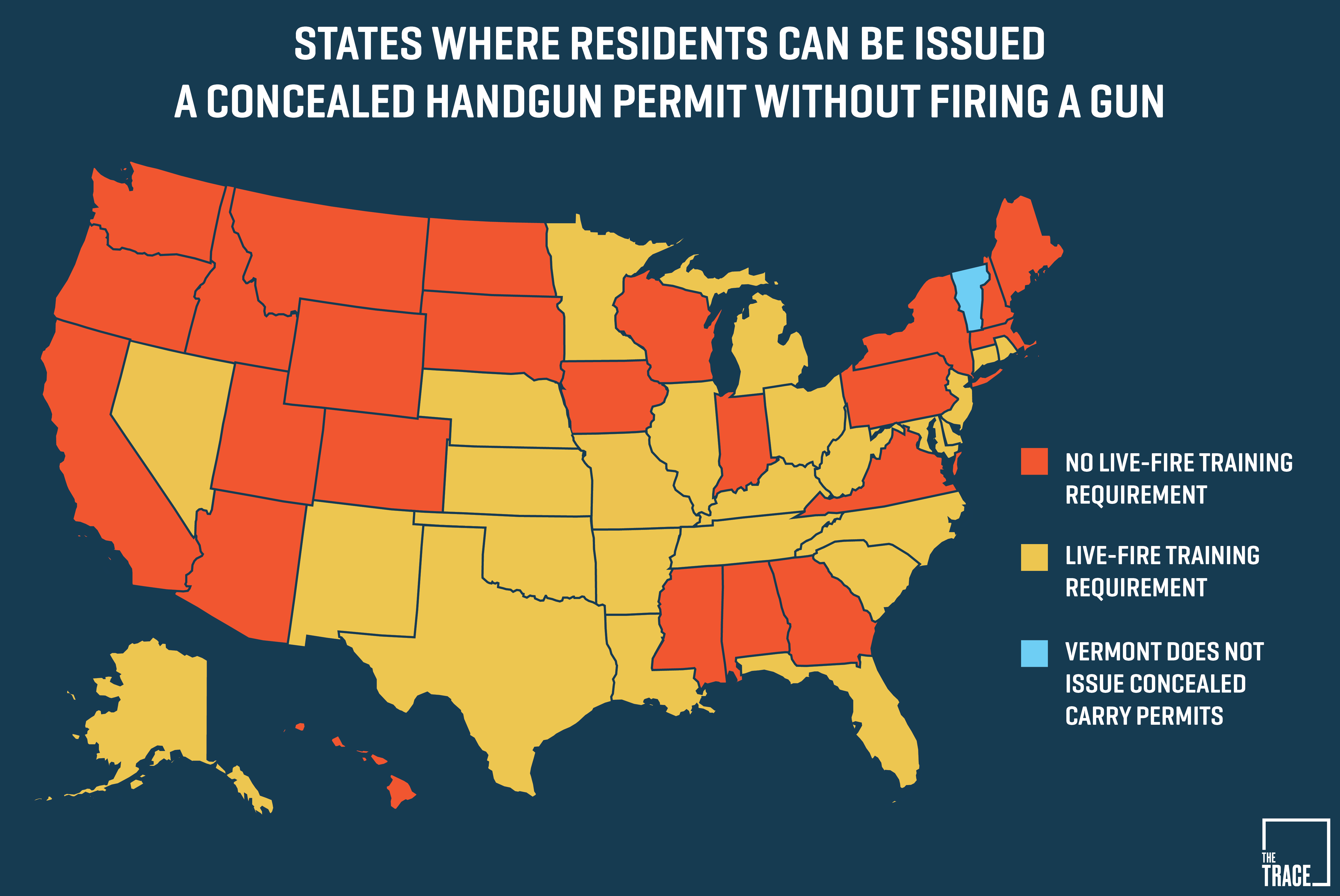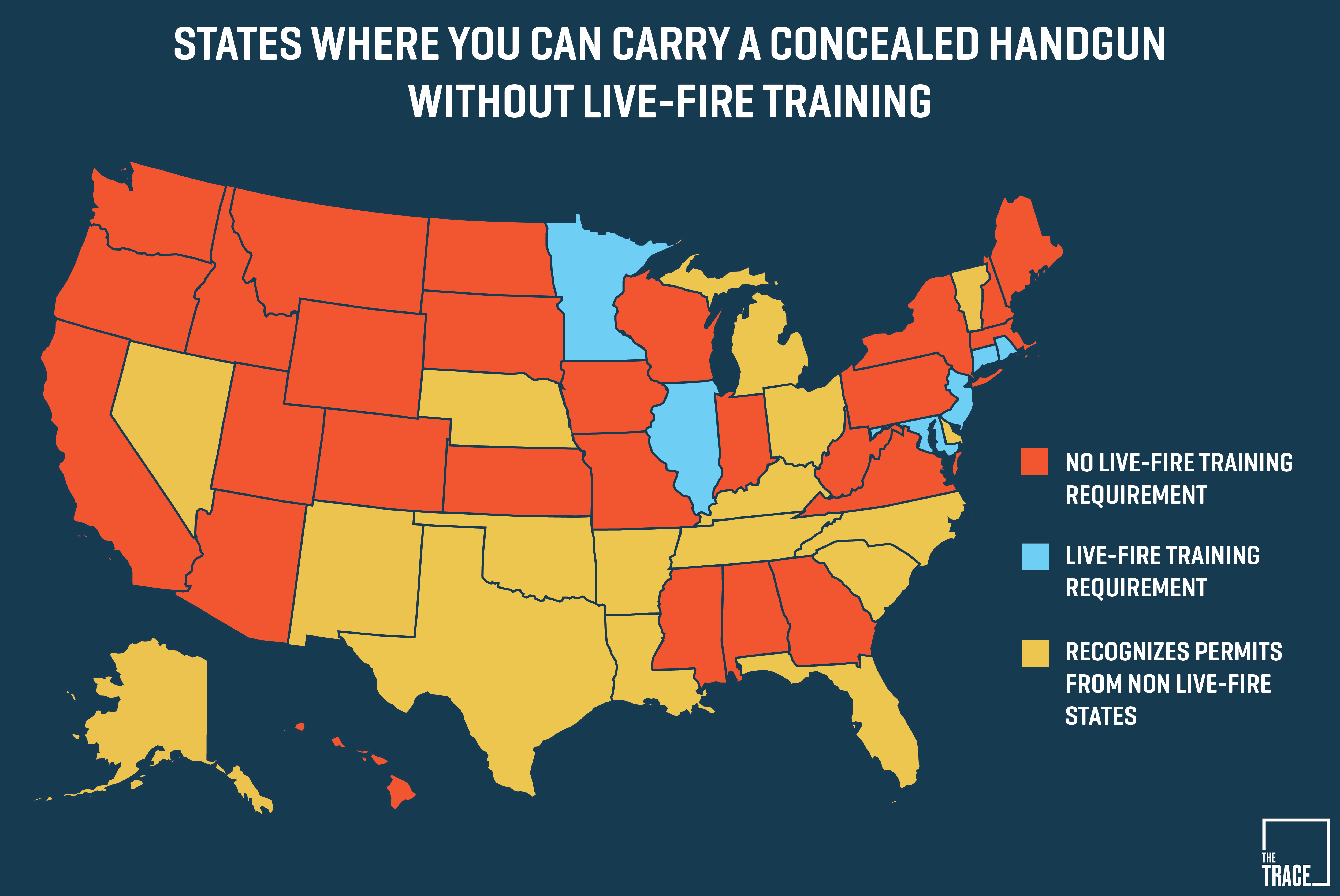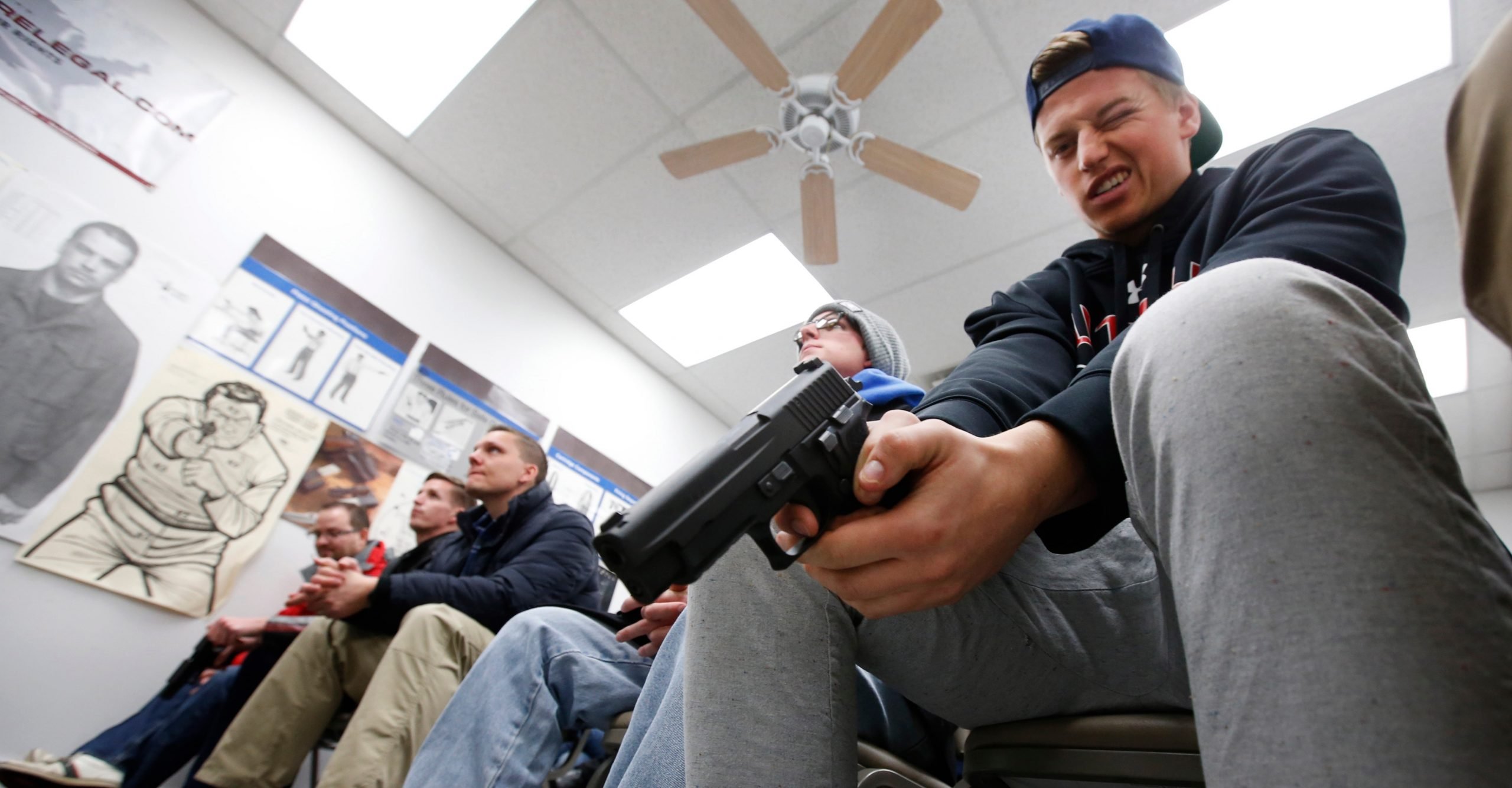On Wednesday night, Republican lawmakers in Missouri voted to override Gov. Jay Nixon’s June veto of a bill, SB 656, that will allow most people to carry concealed guns without a permit. That means that gun owners will no longer have to take an eight-hour safety course or complete a live-fire exercise with a range instructor — requirements that had been in place since 2003. The law will take effect on January 1.
State Senator Brian Munzlinger, a Republican sponsor of the bill, said the legislation, which also creates a Stand Your Ground law, “will allow law abiding citizens to protect themselves from criminals.”
But there’s no guarantee that Missourians will know how to handle their weapons should the need arise. The state now joins 25 others that do not have a requirement that applicants for a concealed-carry permit undergo live-fire training, according to a state-by-state review of training standards.
Just 24 states and the District of Columbia include mandatory range time as part of their permitting process, while the remaining 26 have no such requirement in place. (Vermont does not issue concealed-carry permits at all.) States that do not mandate live-fire training include states like Pennsylvania, where applicants must only meet a set of criteria — a clean criminal record and good mental health history, for instance — to be handed a permit. On the other end of the spectrum, in order to receive a permit in Kentucky, applicants must demonstrate their shooting ability by placing 11 of 20 rounds on a full-size silhouette target.
At least 8 million Americans had an active permit to carry a concealed weapon in 2012, according to a report by the Government Accountability Office. A more recent estimate by pro-gun researcher John Lott places that figure closer to 13 million.
“I have people who come to my class who basically couldn’t hit the broad side of a barn,” Rick Strohmeier, a firearms instructor in Fisherville, Kentucky, told The Trace. “I think Kentucky is doing the right thing and everyone else is doing the wrong thing.”
“It takes 2,500 repetitions to pick up a pistol correctly,” he added.
To compile a national breakdown of live-fire requirements, The Trace examined state statutes covering concealed-carry licensing. In cases where the language of a state’s law did not specify a training requirement one way or the other — some call for a basic handgun safety course but do not spell out whether that encompasses a live-fire component — we contacted the state’s centralized issuing authority.
Some states, like California and Hawaii, have no such central authority setting the rules for concealed carry, leaving it to local authorities to issue permits and establish training requirements. It’s possible that these local authorities make permit-seekers in their individual jurisdictions go through training that goes beyond state minimums.
For instance, though California does not have a statewide standard regarding live-fire training, sheriffs in half a dozen counties contacted by The Trace require it for permit seekers under their purview. Hawaii also does not have a statewide live fire requirement. At the same time, it’s been a labelled a “no issue” state by gun-right advocates: Just 21 private citizens in Hawaii applied for concealed carry licenses in 2014, and all were denied.
Ultimately, such local quirks fall outside the scope of our analysis. Instead, we focused solely on state requirements — and the question of whether the licensing authority takes steps to ensure that every permit applicant demonstrates competence at the range before granting a license to carry a gun into public spaces. Accordingly, neither California nor Hawaii appear on our live-fire list.

Typically, gun laws in blue states are more strict than they are in red states. But in some places, the split on live-fire mandates does not follow the usual partisan divide. New York and Massachusetts, for instance, require permits to purchase a handgun, and Washington is one of only eight states to require background checks on all gun sales. Yet these states, named among the worst for gun ownership by Guns & Ammo, do not require live-fire training before issuing a permit to carry a concealed handgun. Even New York City — where applicants for concealed-carry permits go through a selective, months-long process involving letters of necessity, character references, and multiple interviews with police — does not require applicants to learn how to shoot a gun in order to carry one in public.
In Texas — a state which just legalized the carrying of concealed handguns on public college campuses — applicants are required to demonstrate their shooting proficiency by firing a series of shots from varying distances. In practice, the instructors who administer the training can let applicants keep firing until they record a passing score. But by subscribing to a live-fire requirement, Texas is aligning itself with a belief about gun safety: Concealed carriers who aren’t familiar with how to use their weapon pose a danger to themselves and the public.
Read Next

How Many People Have Been Shot Near You This Year?
“I always use the driving analogy: You get your teenager behind the wheel, it’s a complete mess,” said Kelly Venden, owner of Criterion Tactical, a firearms training center in San Antonio. “It’s the same thing with a weapon. You get a person who’s unfamiliar and put a live weapon in their hand and expect them to be both competent and safe, you’re asking a lot of that person.”
State driving tests require license applicants to show that they can parallel park, execute a three-point turn, and merge safely into traffic as a Department of Motor Vehicles staffer scores their performance. But here’s where the car analogy breaks down for Venden. He thinks government mandated live-fire training for concealed carriers goes too far.
“I agree with it from the safety perspective, but disagree with it constitutionally,” he said. Instead, Venden said, he sees the issue as one of individual responsibility for gun owners. “You have to do your due diligence to be both safe and proficient.”
Seven states — Maine, Arizona, Kansas, Wyoming, Alaska, Vermont, and now Missouri — do not require a permit to carry a concealed handgun within their borders. But some residents of these “permitless” states opt to obtain a license anyway, often for the ability to carry their guns out of state. (Only in Vermont is this not an option, since Vermont does not issue concealed carry permits at all.) The only permitless states that require live-fire training for a concealed carry permit are Kansas and Alaska.

States recognize other states’ concealed-carry permits through two mechanisms: “Recognition” agreements, in which a state honors another state’s permit, are nonreciprocal. And “reciprocity” agreements, which describe a mutual agreement between states to honor each other’s permits. Through these too types of agreements, 44 states allow people to carry a concealed handgun within their borders without having been required to show that they know how to properly fire one.
Only six states require both residents and concealed carriers visiting from out of state to undergo live-fire training. They are Connecticut, Illinois, Maryland, New Jersey, Rhode Island, and Minnesota.
Residents of states with stricter permitting standards have used recognition and reciprocity agreements to get around licensing rules that might disqualify them from carrying concealed firearms, or just to avoid regulations that they deem a hassle. Last year, some North Carolina residents were found to be skirting their state’s basic handgun training class requirement, which includes a mandatory live-fire component, by obtaining concealed carry-permits from neighboring Virginia, where the permit process is more relaxed.
Permits from Virginia are valid in North Carolina, and only require applicants to pay a fee, watch a gun safety video, and answer an online questionnaire. Attorney General Mark R. Herring announced in December that Virginia would no longer recognize agreements with 25 states, including North Carolina. But a month later, Governor Terry McAuliffe brokered a deal to reverse the new rule, enraging gun-control advocates.
Even if Virginia were still moving toward toughening its permitting rules, North Carolinians unwilling to visit the range would still have had their choice of options. Utah and Arizona not only have no live-fire requirements, but also allow people to apply for their permits from anywhere in the country (Utah permit classes are popular as far away as Maryland, for instance).
Through recognition agreements, permits from those two states are valid in three dozen others, making it possible for their holders to criss-cross the country carrying concealed guns, without anyone having verified that their aim is true.
[Photo: George Frey/Getty Images; Maps by Joel Arbaje]

